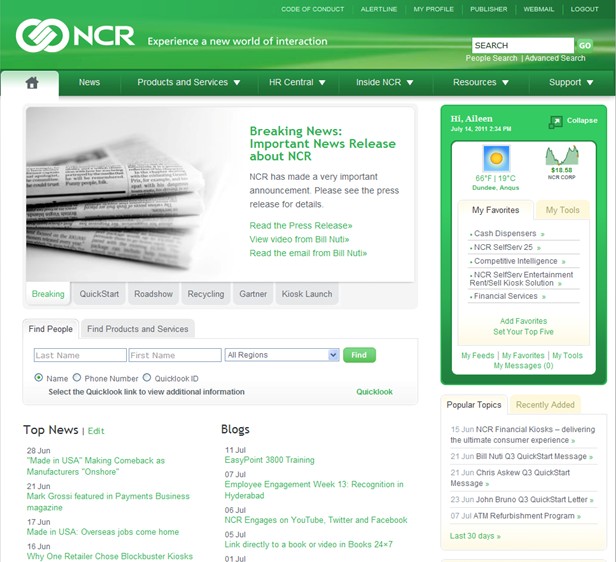Employees may waste too much time on the intranet; social media wastes time; the Internet is a productivity drain. These are common refrains and concerns expressed by many executives, albeit the less educated ones, generally of an older generation, nearing or past retirement. And yet, employee productivity is a big concern.
The exact same concerns were made about employee bathroom breaks, mealtimes, telephone use, etc. General Motors, that great stalwart of financial prudence, used to hire people to time employees when they used the bathroom (source: Negotiate This, Herb Cohen, CD Audiobook – Barnes & Noble). Employee productivity has always been a concern.
When speaking to clients the issue of productivity is often a concern. I frequently am asked “how do we leverage our intranet to improve information sharing, protect intellectual property while at the same time reducing the cost per employee?
Every organization wants to maximize profit (cash flow) and ultimately, productivity drives profit; and so does innovation.
“When productivity rates leap, so do enterprise profits. In the past century, we have automated blue-collar work, wringing more products out of every worker hour,” says Susan Feldman, IDC analyst and author of the report, Hidden Costs of Information Work: A Progress Report. “But in an economy that is now more information based than industrial, increasing the productivity of the information worker has become imperative.”
Concerns about productivity, therefore, are real and valid. Although often these concerns are misplaced: if employee compensation and rewards models are all that they should be, and employees are accountable for objectives and goals, then concerns over productivity drain from activities such as using the Internet, or intranet, should abate (if the intranet is in fact a sound system, and not the dog’s breakfast that many still are). In short, the corporate intranet (and use of the Internet for activities such as research) can be a tremendous productivity gain, not a drain.
“As organizations downsize in this year’s financial crisis, they will need to streamline and automate information tasks and processes if they are to survive with fewer workers,” adds Feldman (keep in mind, real estate may be rebounding, and the stock markets may be unusually high, but there is still a massive credit crunch, and there are many industries still in recession). “They will need to ferret out instances of duplicated effort, and they will need to invest in software that can speed up processes like eDiscovery, categorization, call center support, publishing, and collaboration while reducing manual labor.”
IDC conducted a survey of 706 knowledge workers. IDC asked respondents about:
- various information tasks performed by knowledge workers; and
- repetitive tasks that might be prime targets for automation or improvement.
On average, IDC estimates the average information worker salary of $75,000 per year. They then took the data that we had gathered on the average number of hours spent on each task and discovered the following about the average information worker respondent:
- 13 hours per week spent on email (cost: $21,000 per year)
- 9 hours per week spent searching for information (cost: $14,000 per year)
- 8 hours per week analyzing information (cost: $13,000 per year)
- 6.5 hours per week communicating / collaborating with team members (cost: $10,000 per year)
- 6 hours per week creating content (cost: $10,000 per year)
- Nearly 4 hours per week publishing information (cost: $6,000 per year)

Interesting topic. Intranet is also important in the network services of a telecommunication company.